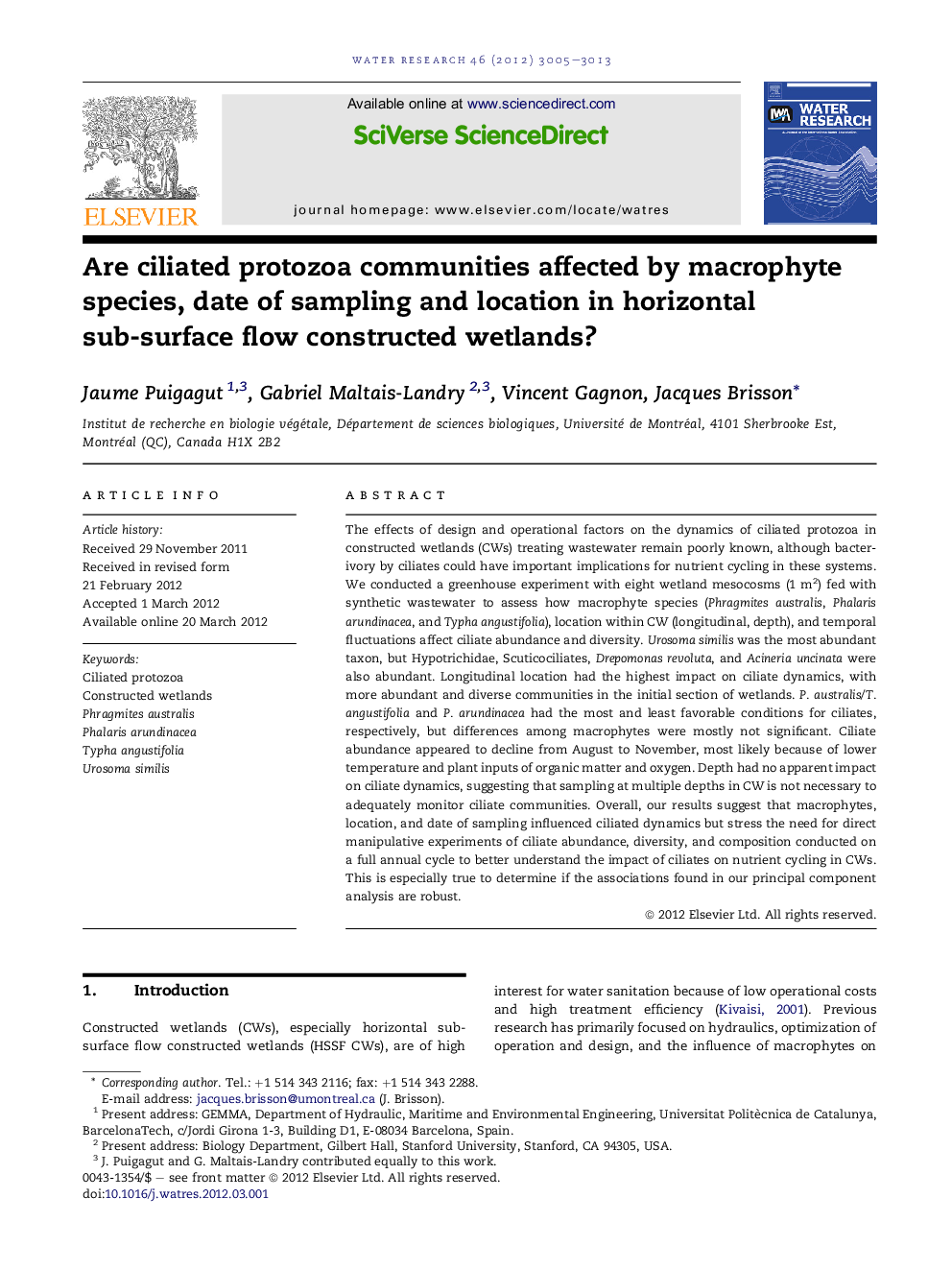| کد مقاله | کد نشریه | سال انتشار | مقاله انگلیسی | نسخه تمام متن |
|---|---|---|---|---|
| 4482792 | 1316869 | 2012 | 9 صفحه PDF | دانلود رایگان |

The effects of design and operational factors on the dynamics of ciliated protozoa in constructed wetlands (CWs) treating wastewater remain poorly known, although bacterivory by ciliates could have important implications for nutrient cycling in these systems. We conducted a greenhouse experiment with eight wetland mesocosms (1 m2) fed with synthetic wastewater to assess how macrophyte species (Phragmites australis, Phalaris arundinacea, and Typha angustifolia), location within CW (longitudinal, depth), and temporal fluctuations affect ciliate abundance and diversity. Urosoma similis was the most abundant taxon, but Hypotrichidae, Scuticociliates, Drepomonas revoluta, and Acineria uncinata were also abundant. Longitudinal location had the highest impact on ciliate dynamics, with more abundant and diverse communities in the initial section of wetlands. P. australis/T. angustifolia and P. arundinacea had the most and least favorable conditions for ciliates, respectively, but differences among macrophytes were mostly not significant. Ciliate abundance appeared to decline from August to November, most likely because of lower temperature and plant inputs of organic matter and oxygen. Depth had no apparent impact on ciliate dynamics, suggesting that sampling at multiple depths in CW is not necessary to adequately monitor ciliate communities. Overall, our results suggest that macrophytes, location, and date of sampling influenced ciliated dynamics but stress the need for direct manipulative experiments of ciliate abundance, diversity, and composition conducted on a full annual cycle to better understand the impact of ciliates on nutrient cycling in CWs. This is especially true to determine if the associations found in our principal component analysis are robust.
Figure optionsDownload high-quality image (148 K)Download as PowerPoint slideHighlights
► Ciliate abundance and diversity were higher in the initial section of wetlands.
► The dominant ciliate taxon was Urosoma similis.
► Phalaris arundinacea wetlands had the least favorable conditions for ciliates.
► Ciliate abundance varied temporally but not diversity.
► Ciliate dynamics were unaffected by depth in these systems.
Journal: Water Research - Volume 46, Issue 9, 1 June 2012, Pages 3005–3013